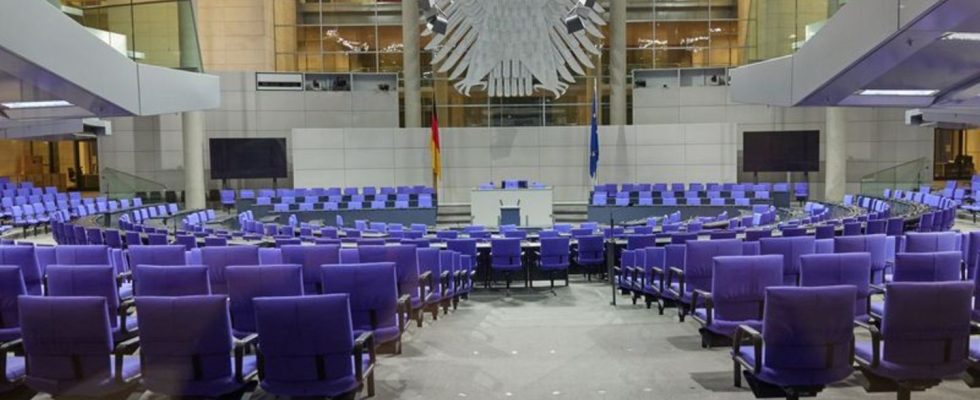After many mishaps, the federal election in Berlin will be partially repeated. Although the result has only limited significance, the losses suffered by the SPD and FDP are enough to make the parties nervous.
After the losses of the SPD and FDP in the partial repeat of the federal election in Berlin, the pressure on the traffic light coalition is growing. Berlin’s SPD state leader Franziska Giffey called for a higher profile for the Social Democrats in the federal government. At the same time, FDP vice-president Wolfgang Kubicki also called for a course correction after his party’s “bitter result”. CDU state leader Kai Wegner viewed the result as a stop signal for the traffic lights.
The 2021 federal election was repeated on Sunday in around a fifth of Berlin’s electoral districts due to organizational breakdowns at the time. Around 550,000 capital city residents were allowed to vote again – only around one percent of those eligible to vote nationwide.
Losses for the SPD and FDP where the vote actually took place
The nationwide overall result for 2021 only changed minimally: the FDP (11.4 percent) and the Greens (14.7 percent) each lost 0.1 percentage points. The CDU (19.0 percent) and AfD (10.4 percent) each received 0.1 percentage points more. The federal result for 2021 did not change for the SPD (25.7 percent) and the Left (4.9 percent).
The shifts in Berlin also remained manageable: According to the new overall results – i.e. electoral districts with repeated voting together with the results that did not have to be repeated – the SPD remained the strongest party with 22.2 percent (-1.2 percentage points), just ahead Greens with 22.0 percent (-0.3).
The CDU improved to 17.2 percent (+1.3). The AfD climbed to 9.4 percent (+1.0), the FDP fell to 8.1 percent (-0.9). With 11.5 percent, the Left practically maintained its result from the 2021 election (+0.1).
However, the trend was clearer in the districts where the vote actually took place: there, the SPD and FDP lost significantly, while the CDU and AfD gained significantly. And although the number of voters overall was small, the parties see this as a pointer.
“Take greater action on dissatisfaction among the population”
FDP Vice President Kubicki told the German Press Agency: “It’s a bitter result, but in view of the current survey results it doesn’t come as a surprise. It must be clear to the FDP that only a bolder and more progressive economic, energy and migration policy can achieve this will lead to success.” He warned: “We would do well to initiate this change of course in the coalition at the latest with the upcoming budget discussions.”
SPD state leader Giffey told the dpa that the losses of the traffic light parties had to be taken very seriously. So far the SPD has moderated the traffic lights a lot, now they have to stand up for their position more strongly again. “This means that the dissatisfaction that exists among the population must be taken up again more strongly,” said Giffey. The AfD’s strong performance and low voter turnout are warning signs.
CDU state leader Wegner – who, as governing mayor in the state of Berlin, has led a coalition with the SPD since 2022 – assessed the partial election even more clearly: “People want something to change,” Wegner told the dpa. “They expect the Chancellor to finally say how he wants to lead this country out of the crisis.”
Cautious interpretation of the AfD results
The Berlin political scientist Thorsten Faas also expects corrections in the work of the traffic light. The election result raises the structural question: “How can trust be restored? To do this, a fine line must be found between raising the profile of one’s own party, but also forming a cohesive coalition – especially in terms of appearance.”
Faas advised caution when interpreting the vote gains for the AfD. “In the period between the first election in 2021 and the repeat election in 2024, an incredible number of things happened,” said the party researcher at Free University. This includes the war in Ukraine, the war in the Middle East, the building energy law, but this also includes the demonstrations against the right after Correctiv research at a meeting of radical right-wingers with AfD politicians in Potsdam. “You can’t pick out individual things and draw conclusions about their effect,” said Faas.
The political director of the Green Party, Emily Brüning, viewed her party’s result as a “tailwind for our work and is a good start to this great election year.” The Left sees it similarly: they are going into the European elections and the 2025 federal elections stronger, said Berlin state leader Maximilian Schirmer.
Fewer MPs from Berlin
Although the overall balance of power in the Bundestag does not change, the election still has an impact. Due to low voter turnout in the repeat, Berlin will now only have 25 members of the Bundestag instead of the previous 29. One mandate each from the SPD, the Greens and the Left goes to other state associations of these parties. A mandate from the FDP no longer applies without replacement. This means that in the future there will still be 735 members of the Bundestag, including only 91 from the FDP.
The turnout for the entire Berlin federal election – i.e. in the electoral districts with still valid results and in those with a repeat election – was now given as 69.5 percent (2021: 75.2 percent). This was the lowest value for a federal election in the state of Berlin since 1990. There are still several important elections coming up this year: the European elections on June 9th and the state elections in Saxony, Thuringia and Brandenburg in September.

